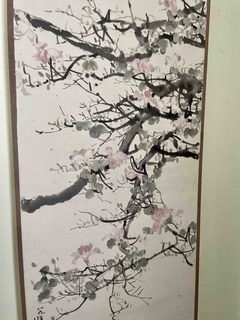The Fascinating World of Chinese Style Painting
Come join me, a New Zealand contemporary artist, on a mesmerising journey through the captivating world of Chinese painting. This rich artistic tradition has fascinated Westerners for centuries. Its unique qualities and distinct style, characterised by simplicity and controlled elegance, have woven a tapestry of fascination and appreciation.
The origins of Chinese painting trace back to ornamental expressions, intricate patterns, and designs that precede the representational images commonly associated with this art form.
Referred to as guó huà in Chinese, meaning 'national' or 'native painting,' it is a marker distinguishing it from the Western art styles that gained popularity in China during the 20th century.
Journey into the heart of Chinese painting, where two distinguished techniques, each with its own exquisite charm, grace the canvas – the meticulous Gong-bi, or "court-style" painting, and the free-flowing Shui-mo, often likened to watercolour or brush painting. Let's unravel the intricacies of these techniques, exploring the craftsmanship and artistry that define each.
Gong-bi – The Courtly Precision:
Gong-bi, often hailed as the epitome of precision and detail, is an artistic discipline that traces its roots to the refined courtly traditions of ancient China. This meticulous technique demands patience and discipline, as artists meticulously portray intricate details with delicate brushwork.
Every stroke is intentional, creating a visual feast that captures the essence of realism with delicate precision. Gong-bi often expresses itself in portraiture, historical scenes, and depictions of courtly life. The artists who master Gong-bi infuse life into their subjects, bringing forth a level of sophistication and exactitude that reflects the esteemed heritage of Chinese culture.
Shui-mo – The Dance of Ink and Water:
On the other end of the artistic spectrum, Shui-mo, also known as "Xie yi" or freehand style, beckons with its liberating and expressive nature. Shui-mo celebrates spontaneity and artistic intuition, capturing the fluidity of ink and water in a mesmerising dance on the canvas.
Artists practising Shui-mo employ broad, sweeping strokes that evoke emotion and capture the subject's essence rather than getting entangled in intricate details. This technique often finds its home in landscapes, where the artist seeks to convey the spirit and mood of the scene rather than rigidly adhering to realistic portrayals.
Shui-mo is an art form that encourages artistic freedom, allowing the brush to dance across the canvas with a rhythm all its own.
While Gong-bi showcases a devotion to precision and disciplined representation, Shui-mo invites the artist to surrender to the unpredictable nature of ink and water, fostering a unique expressiveness.
Together, these techniques represent the duality within Chinese painting – a harmonious balance between the meticulous and the spontaneous, where the brush stroke becomes a vessel for cultural expression and artistic exploration.
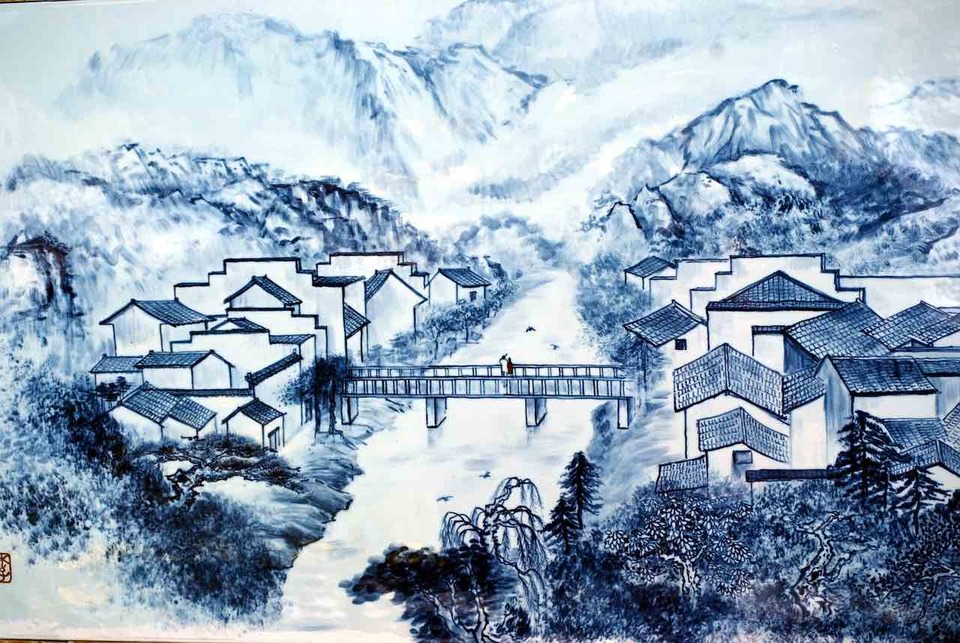
Similar to Calligraphy
Traditional Chinese painting employs techniques similar to calligraphy, with brushes dipped in black or coloured ink. Paper and silk become the canvas of choice, and brushes, distinct from their Western counterparts, feature longer lengths that flow effortlessly.
The loading of the brush and the careful direction of movement during painting become essential elements in creating the final masterpiece, often mounted on scrolls for display.
Chinese style art unveils a captivating narrative by depicting flowers, blossoms, landscapes, and symbolic pine trees. The fan-shaped formations, a departure from the actual shapes of trees, add an aesthetic dimension to the representation.
The subtle stained glass window effect, characterised by soft colours and thin ink washes, demands skill and precision to strike the delicate balance, creating an artistic masterpiece.
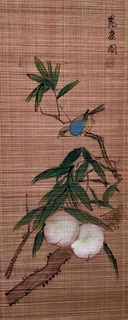
I have this piece on bamboo art on my wall that I absolutely love.
Do Colours Have Significance?
Colours in Chinese painting hold symbolic significance, tied to seasons, planets, animals, and elements.
- Black symbolises water and the north
- White represents metal and the west
- Red signifies fire and the south
- Yellow is associated with earth and the centre.
- At the same time, green is linked to wood and the east.
Each hue weaves a narrative, enhancing the depth and meaning of the artwork. Explore the poetic landscape of Chinese painting, known as 'shan-shui hus,' where mountains embody the yang, the male element, and water represents the yin, the female element. Even when subtly implied, the delicate balance of yin and yang adds a profound layer to the composition.
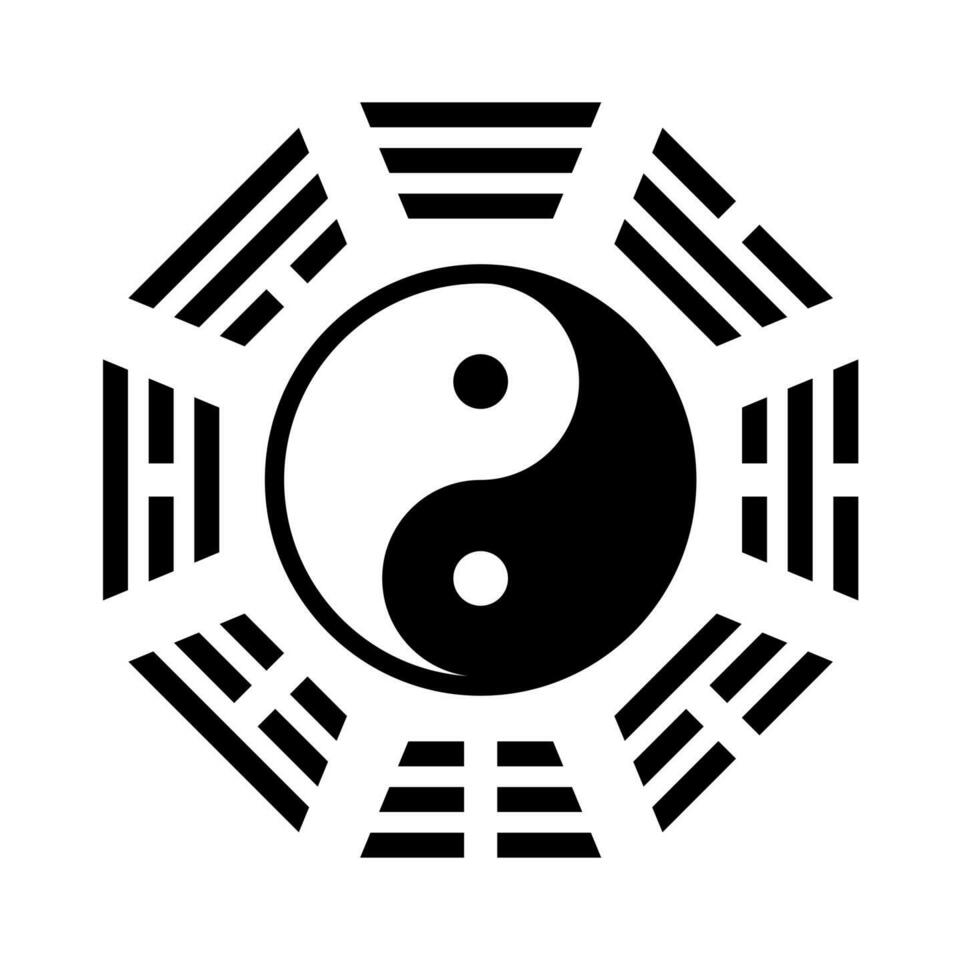
In this artistic journey, discover a departure from Western perspective conventions. Instead of a focal point, Chinese painting creates an illusion of depth through vast differences in scale, suggesting distance without relying on Western techniques. It's a nuanced approach that invites viewers to uniquely explore the artwork's depths.
The History
Stepping into the dynamic evolution of Chinese painting, we see it gracefully navigates the currents of the modern era, where artists seamlessly weave Western techniques into the intricate tapestry of their artistic repertoire. This transformative journey unfolds against the backdrop of shifting ideologies, moving from the rigid constraints of socialist realism to a Renaissance-like resurgence post-Cultural Revolution.
Socialist Realism's Grip:
In the early years of the People's Republic of China, the artistic landscape was dominated by the tenets of socialist realism. Artists were assigned subjects aligned with socialist ideologies and expected to produce paintings that served the political narrative. Imported Soviet Union socialist realism left an indelible mark, imposing strict guidelines on content and style.
Constrained by these ideological shackles, painters were expected to mass-produce paintings according to the prescribed themes. The visual language of Chinese art became a reflection of political ideals, mirroring the societal norms of the time.
A Glimmer of Change:
The rigid constraints began to loosen in 1953, marking a pivotal moment for Chinese art. The Hundred Flowers Campaign of 1956-57 ushered in a brief period of openness, encouraging artists to explore diverse subjects and techniques.
Traditional Chinese painting experienced a significant revival as artists rekindled their connection with centuries-old practices. The cultural landscape, once stifled, began to breathe with newfound vibrancy.
Post-Cultural Revolution Renaissance:
The Cultural Revolution, marked by the closure of art schools and the suppression of traditional artistic expressions, cast a shadow over the Chinese art scene. However, as change swept through China post-Cultural Revolution, art schools reopened, and professional organisations were reinstated.
The creative flames were rekindled by exchanges with foreign artists, sparking experimentation with new subjects and techniques.
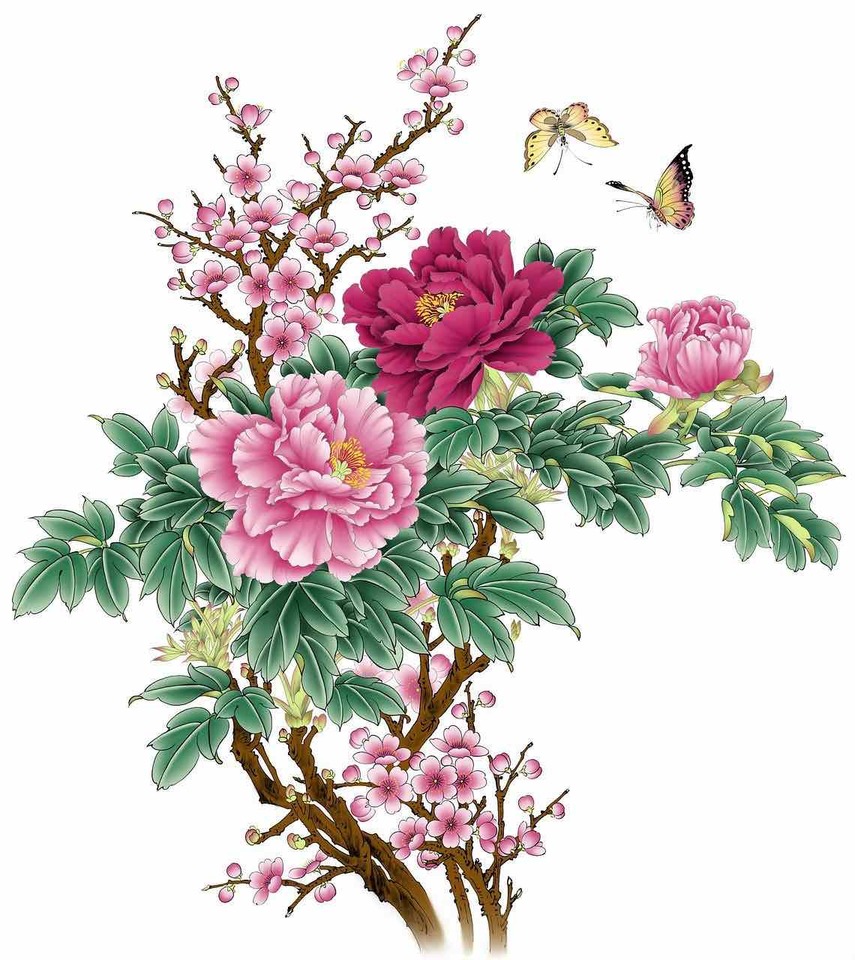
The Fusion of Traditions in Asian Art:
In this Renaissance era, Chinese artists, now liberated from the constraints of socialist realism, found themselves at the crossroads of tradition and modernity. The fusion of traditional Chinese painting with contemporary Western styles became a hallmark of this period.
Artists boldly embraced Western techniques, incorporating new perspectives, colour palettes, and artistic philosophies into their work. The canvas became a meeting ground for diverse influences, resulting in a vibrant synthesis of Eastern and Western artistic traditions.
This dynamic evolution reflects not only a shift in artistic expression but also a broader societal transformation. As Chinese artists navigated the intersections of tradition and modernity, they contributed to a cultural reawakening that resonated far beyond the confines of the canvas.
The embrace of Western techniques became a testament to the resilience and adaptability of Chinese artistic traditions, forging a new era where the rich tapestry of Chinese painting continues to unfold, embracing both its storied past and the ever-changing influences of the contemporary world.
At The End Of The Day
In the grand tapestry of art history, Chinese painting is a testament to its timeless beauty and cultural richness. As you look further into this captivating world, consider immersing yourself – perhaps picking up a how-to book and attempting to capture the essence of this ancient tradition on canvas.
Who knows what artistic tales you might weave with your own brushstrokes? For more on other styles of art check out my Art Blog on this site.
Posted: Wednesday 28 April 2010
